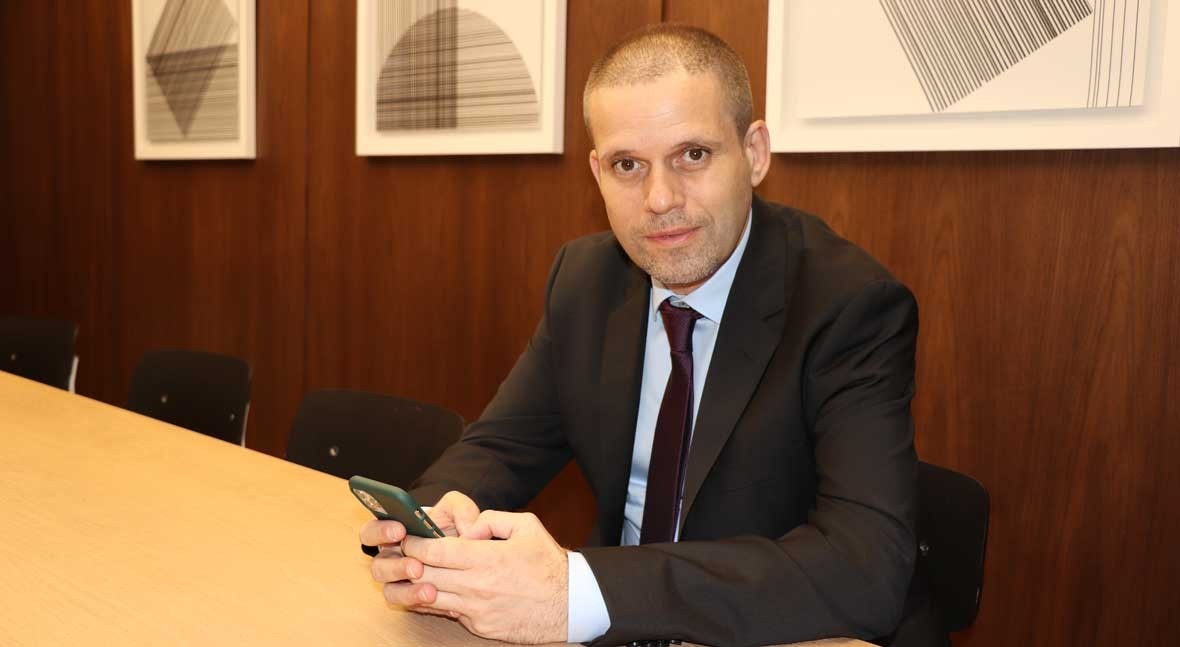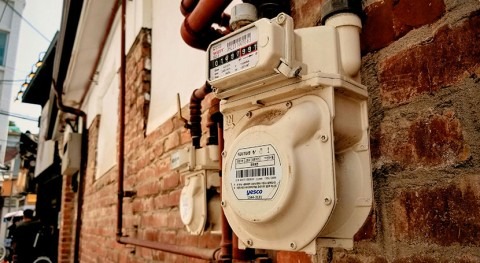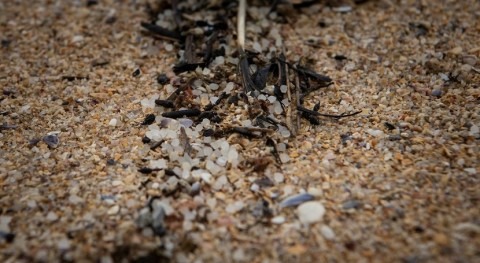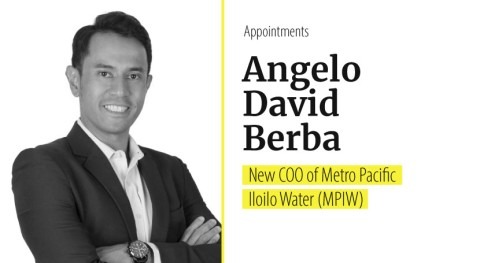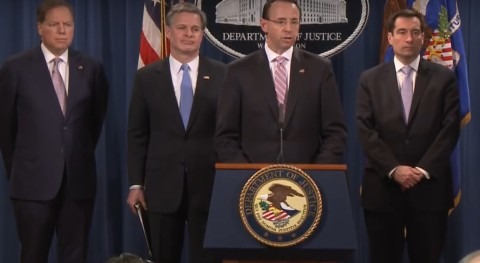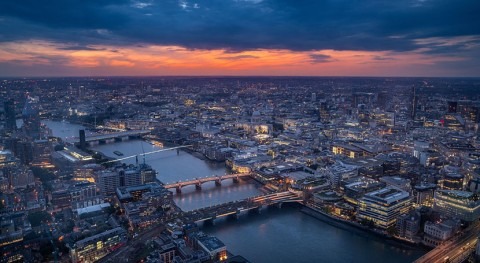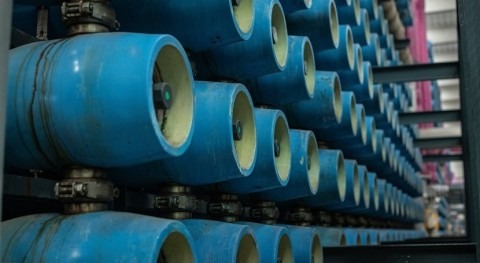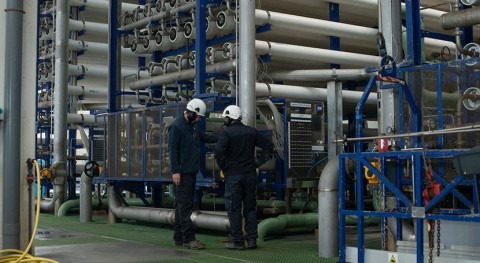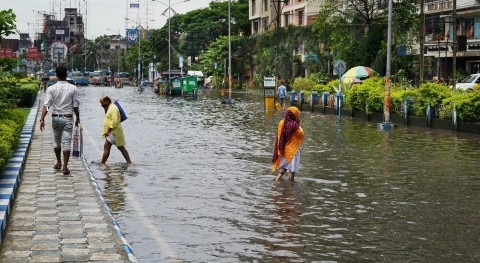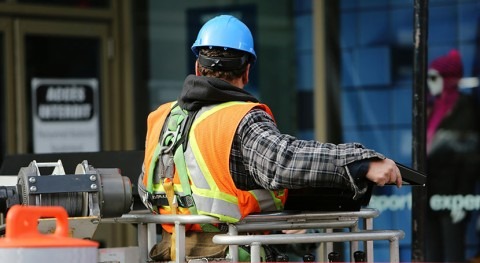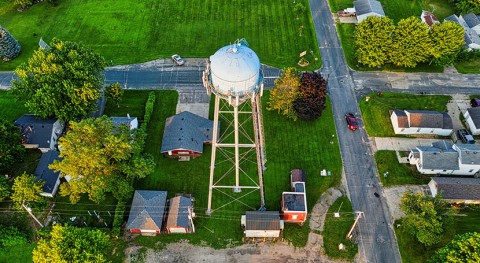I had the opportunity to meet Walid Khoury a few months ago thanks to his intense activity on the social network LinkedIn. Since then, I have been able to enjoy his knowledge, his creativity, his ability to weave networks and, in short, his passion for water. There are now more than 20,000 of his followers on this platform, where his approach has been completely disruptive, and where he has achieved unprecedented interaction with leading professionals from around the world.
With more than 20 years of experience in the sector, being responsible for the business development of important companies in the Middle East and Africa, Khoury has an important background that allows him to detect which are the key issues and which people and organizations have the capacity to solve them. In this interview, we review his career and his unstoppable rise as one of the great world leaders in the water industry.
Question: Firstly, Mr Khoury, could you give us a summary of your career so far?
Answer: I’ve been in the water industry for 20 years now. I started my career as a field engineer, and from there evolved into sales, then leadership roles. I worked predominantly for Fortune 150 companies running businesses across the Middle East and Africa. The most rewarding part has been the last 10 years building diverse and inclusive organizations, deploying innovative processes, while crafting and executing growth strategies. I have been active in water treatment and water quality, in municipal and industrial segments, which helped me acquire a well-rounded experience in the water space.
.jpg)
Q: The world is currently suffering from the consequences of COVID-19 pandemic. How is it affecting the water industry? What changes do you foresee?
A: The water industry is facing challenges in the short term. Budget cuts mean governments and industries have less money to spend on water and are prioritizing other expenditures, primarily in healthcare, and then finding ways to boost and kick-start the economy. Water investments are left behind. So, water companies need to optimize their cost structure now while keeping investing for the long term. I think COVID-19 will be remembered in history as a disruptive force to the water industry, having pushed a traditionally conservative industry to work remotely, find ways to deal with problems, and embrace the latest technologies. Whoever was reluctant to invest in automation is now rethinking their strategy as the recent events proved that utilities who had some forms of automation have been more successful during the lockdowns. Automation is the building block for what can come next. A precursor for digital water, machine learning, digital twins, Artificial Intelligence. Our industry and regulators are risk-averse, and this has forced them to take risks, embrace change, and rethink their priorities.
COVID-19 will be remembered as a disruptive force, having pushed a traditionally conservative industry to embrace the latest technologies
Q: Many cities around the world have implemented surveillance programs to detect the virus in their wastewater. Do you think that these projects can provide a new long-term niche for water companies?
A: While wastewater-based epidemiology (WBE) has been going on for more than 20 years especially in The Netherlands, it wasn't widespread globally. With the pandemic, there was more awareness that we could tell which communities are infected with COVID-19 by testing their wastewater. So, all around the world, we started seeing more sample collection and analysis. This was a catalyst for niche companies to develop further their existing product lines (samplers, online measurement, digital water). I can name a few companies who jumped in and have been quite successful in capturing market share and benefiting from the crisis. Governments have also stepped in. I was involved in projects in Morocco, the United Arab Emirates, and South Africa, and the efforts are global with investments in the USA, Spain, and Australia going on as we speak, to name a few. I suspect this will continue since now there is awareness on how sewer surveillance can help predict an outbreak in a specific neighbourhood, residential compound, or even university campuses, for example.
Q: Much of your career has been in water treatment. What do you think are the biggest challenges the industry is facing right now and what technologies are emerging to solve them?
A: I see two main challenges: talent and innovation adoption.
For the talent part, more emphasis should be done on collaborating with students early on in their journey and bringing them on board, so they join the water industry. Especially when we are losing lots of expertise with people retiring and not being replaced. The talent pool is shrinking, and we need to fast track talent development, as an industry, to be able to keep up with all the emerging challenges. Luckily, the advancement and evolution of e-learning are helping to fast track the learning curve for many young engineers who are joining the industry.
The talent pool is shrinking. We need to fast track talent development to be able to keep up with all the emerging challenges
While there has been lots of innovation in the water sector, regulators have forced end users to stay away from adopting new technologies. AI and big data present a large opportunity for innovation but if you can't hook your system to the cloud, for example, you can’t leverage this at a global scale. As a conservative industry, we are still scared to share our data and connect water plants to the cloud. This might be understandable, as we need to double down on cybersecurity, but again, other industries have been leveraging cloud computing and predictive analytics faster than the water industry. Until regulators adopt an open mindset, we will struggle to deploy all the innovations and make them commercially viable.
There are also emerging pollutant challenges (THMs, PFAS, microplastics) but we keep finetuning the treatment technologies and these challenges are all addressable, with the right investments.

Q: The water sector has long been committed to the digitalization of its operations, but it is still lagging behind other industries such as energy. What priorities do you think are necessary for this digital transformation?
A: Regulators have a role to play as mentioned earlier. We don't have a shortage of innovation. We lack adoption. Digital water has a tremendous role to play. There have been many published cases where digital has made an impact on the industry. We must just double down and let the industry adopt innovation. We see this happening in the private sector. Thousands of cooling tower water treatment programs, for example, are monitored remotely 24/7. So, digital transformation is feasible and can be implemented.
Water challenges will increase due to rapid urbanization and industrialization that are expanding without effective water governance
Q: In recent years, you have led Danaher's Water Quality Platform in the Middle East and Africa. How would you define the water management situation in this geographical area?
A: The MEA region is very fragmented with pocket areas behaving completely differently than others, even cities within the same country. You have rich governments with comprehensive water management policies, and others lacking strategic intent. Others are struggling to meet basic sanitation needs, corruption remaining one of the key drivers for poor efficiencies. Wars, economic collapses also add more to the uncertainties, driving further challenges. Governance is lacking in many parts of the Middle East and Africa. Nevertheless, the market overall remains an attractive one, and companies who invest long term will reap the rewards. Urbanization, demographics, industrialization, and job creation are all positive factors that will shape the industry and drive further investments into the sector for years to come.
Q: Hundreds of millions of people are still without access to clean water and billions without access to sanitation. What policies could be implemented to achieve the UN SDGs on water in this decade?
A: I studied the trends driving water and sanitation in developing economies. It is quite complicated and there is no quick fix. Worse, the water challenges will increase due to rapid urbanization and industrialization that are both expanding without effective water governance. Lack of budgets is adding to the water woes. For this, I believe privatization is the solution since governments don't have the money or the processes to tackle the challenges. On top of this, bureaucracy is overwhelming. We would need development banks to support the privatization process, like the AfDB, IFC, ADB, and so on. Circular water needs to become more predominant, where we bypass building large scale plants, with all the transport infrastructure associated with such massive projects where water is pumped miles away and then pumped back again for treatment, with a large energy footprint. Renewables will also help address power shortages and alleviate water treatment interruptions across the continent. In the long term, I am positive since there is awareness about how important water is, and the younger generations will step in and are willing to make a change.

Q: You have achieved great results in building and managing diverse and inclusive teams. What do you think are the keys to advancing towards this goal?
A: Diversity and inclusion are the way forward. Apart from being the right thing to do, they do contribute to the bottom line. Customers are diverse and we need diverse and inclusive teams to understand their needs and innovate accordingly. To be successful, diversity and inclusion need to become the DNA of the organization. Leaders across all levels need to embrace it, working diligently upfront to make it happen, walking the talk, because you can’t fake it. I focused on driving gender in the Middle East, against all established biases. We increased the women workforce ratio from 14% to 50% in an industry where globally female engineers and managers are only around 22%. If this can be done in the Middle East, it can be done anywhere else in the world. And across all dimensions of diversity (gender, race, sexual orientation, religion, etc). We need to scout for talent early ahead, before the need, so when there is a job opening, we already have a diverse slate of candidates to interview. This doesn't happen overnight. It requires a massive amount of work and leadership commitment. Diversity alone is not the answer. We need to drive inclusion to retain diverse talent and help them thrive. Amending existing workplace policies, driving career progress, and learning opportunities can help tackle inclusion.
Diversity and Inclusion are the way forward. Apart from being the right thing to do, they do contribute to the bottom line
Q: You have recently stood out as a great opinion leader in the social network LinkedIn, achieving enormous influence. How would you define your strategy in this social media and what results are you achieving?
A: On LinkedIn, I am trying to emulate what I am good at in the real world: networking and creating opportunities for people to talk to each other. Since COVID-19 impacted my ability to travel, I started rallying people around - online. I encouraged great minds, leaders in the industry, to interact together by asking them questions about challenging water issues. I joke that people who read my followers' comments will have a crash course on water. With 20,000 followers, my network is becoming a global platform with people from all the continents interacting 24/7, sharing best practices, and real-life examples. I am having a double-digit compounded monthly growth in profile views since May. So, it is working, and I am hoping that I can continue rallying water people around. The more people from the industry interact together, the more they share knowledge and learn, the better it is for our industry and then together, we all rise.
My network is becoming a platform with people from all continents interacting 24/7, sharing best practices, and real-life examples
Q: Finally, what are your plans in the professional field?
A: I am taking my time before deciding my next move. I am now halfway into my career and I don't want to rush in (you might call this a mid-life career crisis). I am getting proposals within MNCs again, being asked to be the channel partner in the MEA region for companies trying to enter the market or not satisfied with their existing partners. Also, I am working on some consultancy requests. People are calling me now an influencer in the water space, but I think that’s a stretch.


